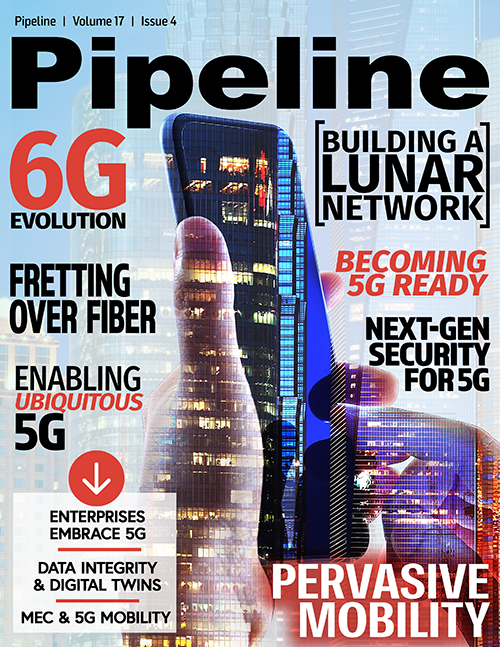Letter from the Editor: The Race to Tomorrow

What a difference a year makes. It may not seem like it, but the pandemic is nearly behind us. Vaccinations are rolling out, regions are beginning to reopen, and business is returning to some level of normalcy. As normal as it can be, all things considered.
While some regions are contending with new, variant strains of the virus, the early indications are that the vaccines currently in use are effective at protecting against them. However, the early studies also suggest that the level of protection is up to six times lower for both the South African and Brazil variants, according to data from vaccine provider Moderna. Add to that, comments from the UK prime minister, indicating serious concerns that the UK variant may be more lethal than the predominant strains we’ve seen so far. The world now finds itself in this peculiar limbo, this cat-and-mouse race against time, and between the propagation of the more virulent strains and the rollout of vaccinations.
Which will win? Only time will tell. But there are things we can do to tip the scales in our favor. For starters, the COVID virus isn’t magic. It’s simply a bit of genetic material wrapped in a spikey protein wrapper. It’s certainly not indestructible by any means. Lots of things are effective at breaking down both: bleach, hydrogen peroxide, temperature, and UV-light just to name a few. We also have learned a lot more about the virus over the last year. We know it’s size, how long it lasts on surface materials, persists in aerosolized forms, and how it transmits. Armed with this information, we can better protect ourselves and see ourselves through to the other side.
There is a lot of information, and misinformation, out there leading to much debate. Wear a mask, don’t wear a mask, go out, lock down, and so on. But the truth is both sides of the argument are technically correct. Some masks aren’t very effective at stopping the transmission of the virus. Some however, are. In particular, (if you pardon the pun) based on the size of the aerosolized virus particle, n95 or better masks are the only masks that can actually filter it out from the air. While other masks can help protect against the virus in droplet form, that only matters if someone with COVID sneezes in your face. However, it doesn’t help you if someone sneezed in the aisle at Walmart two hours before you sauntered down the same aisle. Think of it this way, you don’t see people in labs working with COVID wearing a Hello Kitty linen mask. They’re wearing n95s, or n99s masks. That’s why.
On the reopening debate, it’s certainly safest to avoid outside human contact. It’s true that you can’t catch COVID if you don’t come in to contact with people that have it. On the other hand, that’s nearly impossible. It becomes a quality-of-life issue, and one of significant economic, psychological, and self-fulfillment importance. Put another way, there’s no point avoiding a potentially devastating virus if your life is devastated as a result. This is where the science comes in again.
Want to order delivery from your favorite restaurant? You can. Just bake it at 180 degrees for 20 minutes to reheat it after it arrives. It’ll be hot out of the oven, taste great, and the studies indicate the virus cannot survive for very long at 140 degrees.
Want to go out? Take a walk, go outside, and even go to non-crowded spaces and maintain a safe distance. A safe distance isn’t six feet either, it’s more like 12. Anyone who watched the popular Discovery show Myth Busters knows, a sneeze can spread up to 12 feet and travel at over 100 miles per hour. Not, however, if you are wearing a mask at the time you sneeze. And, wear an n95 mask! Even if someone is wearing a mask and sneezes, the virus can remain aerosolized (in the air) for up to 3 hours, in it’s smallest form, making it through even the very best of Hello Kitty masks. Then, after you return home, throw your outerwear (including your mask) in the sunshine or under a UV light for 15 minutes, wash your hands, and maybe even take a shower. You’ll be safer, cleaner, and smell better too!
Throughout the pandemic, I have taken the family to the park, mall, drive-in movies, cider mill, and arcade. We’ve ordered from some of our favorite restaurants, left our home, gone to the store, had packages delivered and company over, and done lots of things around the house and yard. However, we were smart, safe, and nobody has gotten COVID. It has been a lot of effort, and we can’t wait until this pandemic is behind us, but this is what is required to get us from here to there.
The good news is, no matter what side of the debate you are on, you were right. But what’s important is that you understand the reasons why you were right, where you may have been wrong, and do the things necessary stay safe and well until you get your jab in the arm. It’s equally if not more important we continue to look forward, not backward, and adjust so that we can quickly move past this.
While many things have changed, and tomorrow will look much different than yesterday, some things will remain true. Our connection to one another will continue to be paramount, both figuratively and literally. The technology we have now become accustom to and rely upon – such as video-calls, ecommerce, telemedicine, and others – is a part of our foreseeable future. More so if the pandemic persists or the new strains take a turn for the worse. Companies around the world have been rallying to meet this demand, and ensure we are connected to the services and people we need. What’s more is they have been continuing to innovate, expand, and build out the backbone necessary for us to remain connected as a global society and economy. Which is why this issue of Pipeline is so relevant.
In this issue of Pipeline, we examine the topics and innovation surrounding pervasive mobility. CommStar tells us how they are building a lunar network and the NGMN Alliance walks us through the evolution to 6G. Positive Technologies examines 5G security risks, emerging standards, and best practices for mitigating them. CommScope shares their “inside-out” perspective to indoor 5G network deployments across a variety of industries. BearingPoint shows us how enterprises are embracing 5G, and spotlights the important role of industry ecosystems. Dell’Oro Group tells us how to unlock the power of pervasive 5G mobility with MEC. ZenFi discusses the 5G infrastructure requirements needed to deliver on the promise of 5G, Telia Carrier explores the role of fiber optics in supporting next-gen wireless services, and FNT software explores data integrity, integration and the role of the digital twin. All this plus the latest industry news and more.
We hope you enjoy this and every issue of Pipeline,
Scott St. John
Managing Editor
Pipeline
Follow on Twitter | Follow on LinkedIn | Follow Pipeline



















